Eimmart: Turnus takes Pallas' sword belt
Annotations
Turnus robs the slain Pallas of his sword belt. There are foot soldiers, riders and a chariot with charioteer in the background.
Turnus raubt dem erschlagenen Pallas den Schwertgurt; im Hintergrund Fußsoldaten, Reiter und ein Zweigespann mit Wagenlenker. (Suerbaum)
Engraving from a German children’s picture-book version of the Aeneid by G. J. Lang and G. C. Eimmart, “A tapestry of Roman virtues as seen in Vergil’s Aeneas and his brave deeds, rendered in sparkling engravings, as illustrations of the remarkable deeds of antiquity, for the common benefit of noble youth,” (Peplus virtutum Romanarum in Aenea Virgiliano eiusque rebus fortiter gestis, ad maiorem antiquitatis et rerum lucem, communi iuventutis sacratae bono, aere renitens) (Nuremburg: J.L. Buggel, 1688), pl. 43.



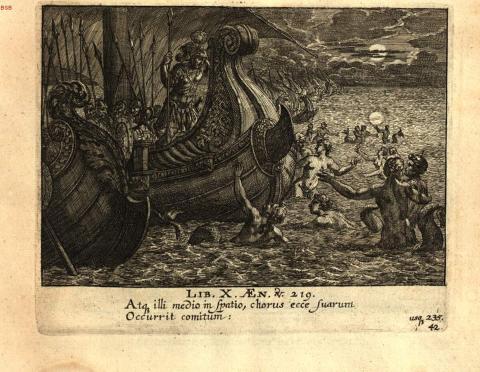


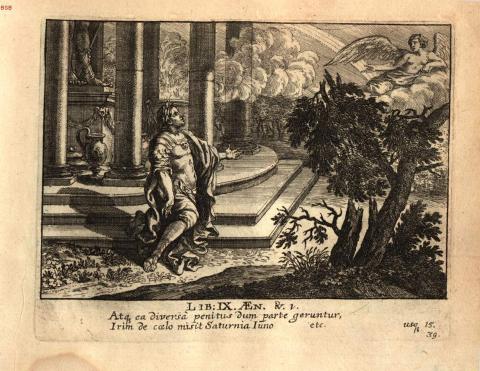
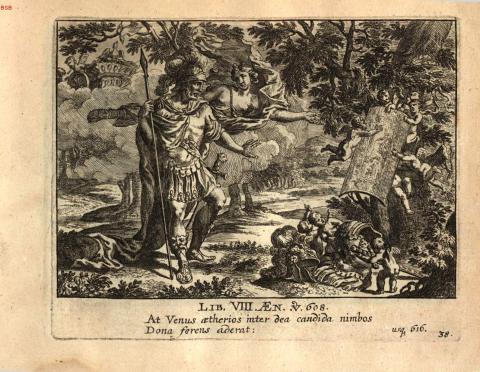
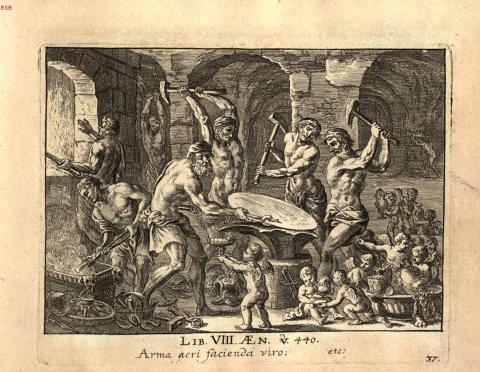
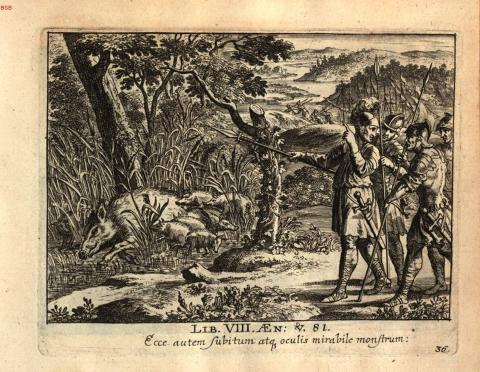
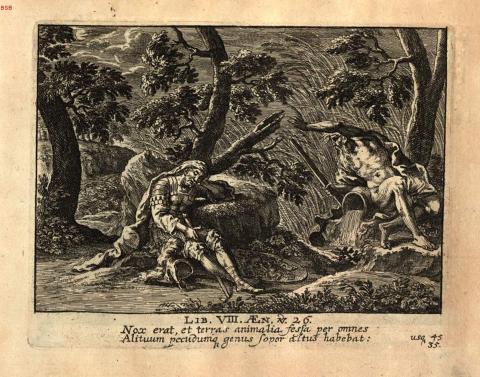
The death of Pallas is a very important moment in the Aeneid, not least because Turnus seals his own fate with his brutal treatment of the young Arcadian. Turnus and Pallas are very clearly the main subject of this engraving, with the background drawn in with lighter lines to make the central pair pop out. Turnus is in the act of robbing the dead Pallas of his sword belt. The placement of his foot on Pallas’ stomach emphasizes the brutality of the whole episode. Turnus certainly comes off at his worst in this scene, ordering his troops to stand aside as he kills Pallas himself and declaring that he wished Evander could be there to witness the death of his son (cuperem ipse parens spectator adesset, X. 443). In the middleground are the troops of Turnus, and in the far background is the camp of the Trojans and Arcadians. (Lucy McInerney)